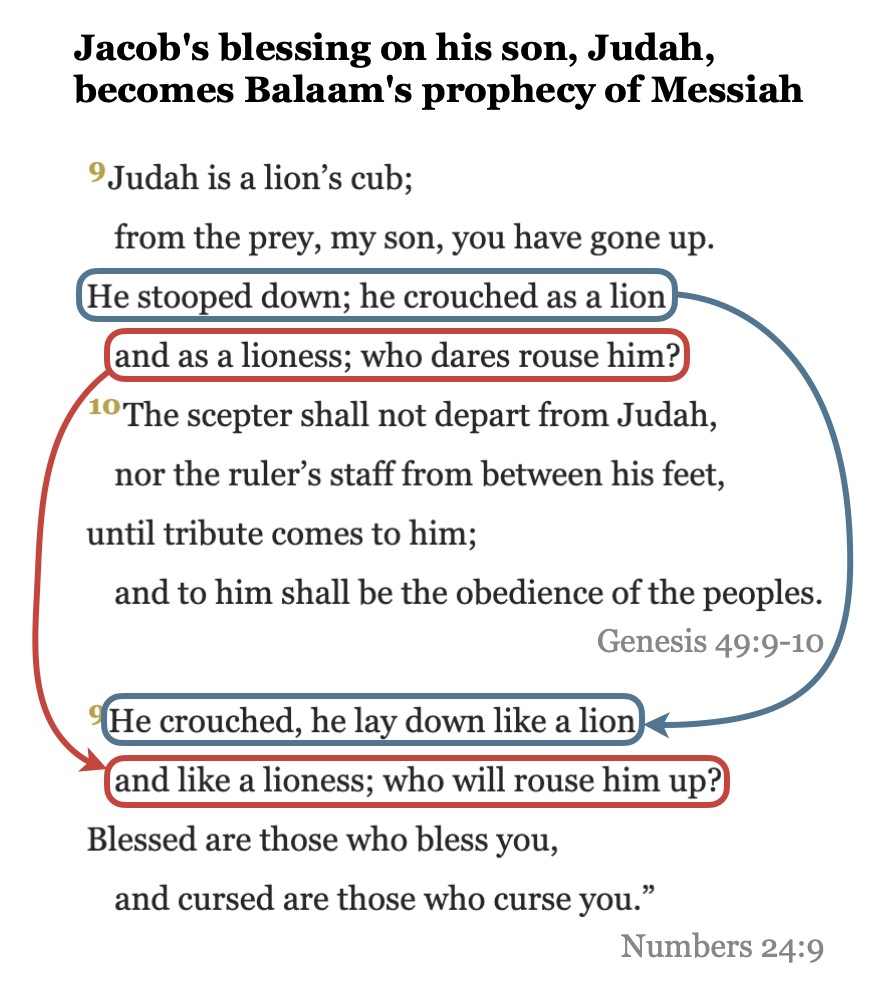Lesson 3: Learning Our Hermeneutic from the Bible
Example 1
We will now explore several examples of a biblical author interpreting an earlier biblical passage. Our aim is not yet to develop interpretative principles. We will do this in future lessons. Instead, we merely aim to consider several examples of the Bible following its own hermeneutic and inviting us to do the same.
Out of Egypt I called my son
Matthew 2:15 presents us with a wonderful example of the Bible interpreting the Bible. In this passage, Matthew follows the Bible’s own example as he interprets Hosea 11:1 in the light of Christ. Matthew follows the interpretative principle that Jesus himself fulfills Israel’s calling as a nation (Lesson 7 will unpack this principle). But note that Matthew does not invent this principle. He follows a principle established by earlier revelation. In doing so, Matthew invites us to follow the Bible’s example as we seek to develop a biblical hermeneutic.
Let's take a closer look at Matthew 2:13–15:
Now when they had departed, behold, an angel of the Lord appeared to Joseph in a dream and said, “Rise, take the child and his mother, and flee to Egypt, and remain there until I tell you, for Herod is about to search for the child, to destroy him.” And he rose and took the child and his mother by night and departed to Egypt and remained there until the death of Herod. This was to fulfill what the Lord had spoken by the prophet, “Out of Egypt I called my son.” —Matthew 2:13–15
In his Gospel account, Matthew reports that Jesus' parents fled to Egypt in order to escape Herod’s murderous plan. But Matthew declares that there was a higher purpose in these events: This was to fulfill what the Lord had spoken by the prophet, “Out of Egypt I called my son.” (Matt 2:15).
In verse 15, Matthew quotes from Hosea:
When Israel was a child, I loved him, and out of Egypt I called my son. —Hosea 11:1
Hosea’s words clearly refer to the nation of Israel and their exodus from Egypt. How is it, then, appropriate for Matthew to state that Hosea’s words refer to Jesus? The answer is simple: Matthew is following the Bible’s own interpretative example.
We can demonstrate this by considering how the book of Numbers envisions the coming of a Messiah who would fulfill Israel’s calling as a nation. Numbers 23–24 records Balaam’s four oracles concerning the nation of Israel.

The Israelites left Egypt and were now on the move to approach the borders of the promised land. Balaam’s final two oracles speak in terms that go far beyond the nation of Israel and point distinctly to Israel’s Messiah (see Num 24:14-17). In so doing, Balaam repeats the words of Jacob (Gen 49:9–10), who, in blessing his sons, declares an explicitly Messianic blessing over Judah.

Within this Messianic context, Balaam prophetically connects Israel’s exodus from Egypt to the Messiah. In his second oracle, referring to the nation as a whole, he says,
“God brings them out of Egypt and is for them like the horns of the wild ox.” —Numbers 23:22, emphasis mine
But then, in his third oracle, he speaks of Israel as a singular man:
God brings him out of Egypt and is for him like the horns of the wild ox. —Numbers 24:8a, emphasis mine
In his record of these events and prophecies, Moses clearly connects Israel’s exodus to the coming Messiah from the tribe of Judah. Moses envisions a singular, male Messiah who represents the nation and fulfills its calling. There are many interpretative principle to unpack in Matthew 2:13–15. But here we simply want to note that Matthew follows Moses's example when he uses a text about Israel to describe the Messiah. Jesus represented and fulfilled Israel's story. Jesus, himself, makes a clear assertion, even broader in scope, when he says,
Do not think that I have come to abolish the Law or the Prophets; I have not come to abolish them but to fulfill them. —Matthew 5:17
In Matthew 2:15, we see a clear example of a biblical author following the interpretative principles modeled by an earlier biblical author. This example grounds our own call to seek a biblical hermeneutic.